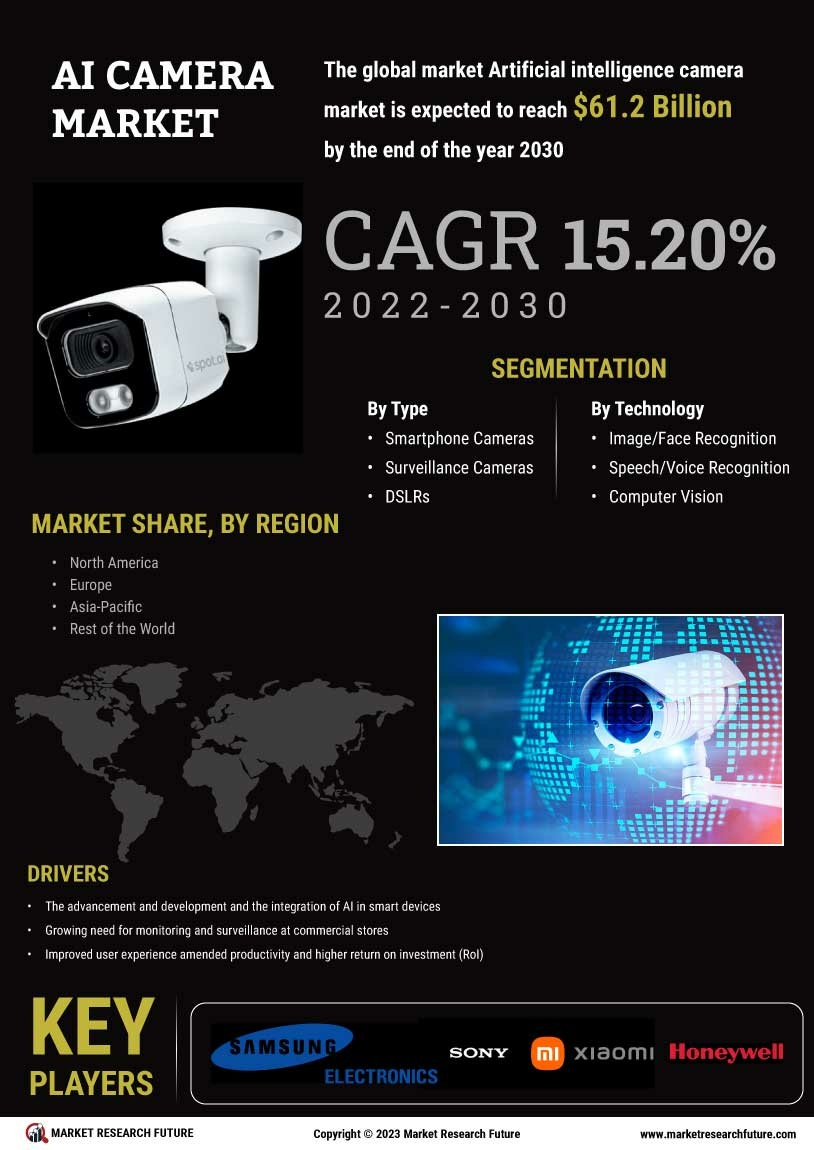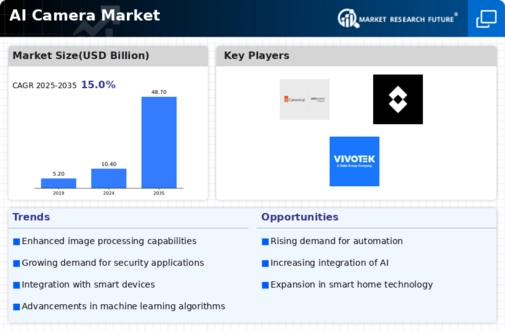Leading market players are spending a lot of money on research and development to expand their selection of goods, which is causing the market for artificial intelligence cameras to grow even more. Market participants are also engaging in various strategic initiatives to expand their presence globally. These endeavors include introducing new products, forming contractual agreements, merging with, or acquiring other companies, increasing investments, and collaborating with other organizations for market developments. The Artificial Intelligence (AI) Camera sector must guarantee the availability of affordable products if it is to survive in a market environment that is becoming more competitive.
Manufacturers in the global AI Camera industry employ the strategic approach of local manufacturing to reduce operational expenses. This enables them to serve clients more effectively and expand their market share. The healthcare sector, in particular, has greatly benefited from the numerous advantages offered by the Artificial Intelligence (AI) Camera industry.
Major players in the Artificial Intelligence (AI) Camera market, including Axis Communications AB, Bosch Security Systems Inc, Canon Inc. from Japan and Panasonic System Networks Co., Ltd., FLIR Systems Inc., Hangzhou Hikvision Digital Technology Co., Ltd., Honeywell Security Group, Sony Electronics Ltd., Zhejiang Dahua Technology Co., Ltd., and Vivotek Inc.
Hikvision, a prominent global provider of video surveillance solutions, was established in 2001 and is headquartered in Hangzhou, China. The company specializes in the development and production of CCTV systems, encompassing cameras, digital video recorders (DVRs), and network video recorders (NVRs). Additionally, Hikvision offers cutting-edge software platforms and advanced technologies, including artificial intelligence and deep learning, for a huge range of applications such as security and surveillance, traffic management, and industrial automation. The company's commitment to research and development has propelled them to the forefront of the video surveillance industry.
In August 2022, Hikvision introduced an AI-powered web camera. This web camera boasts various features, including precise autofocus, exceptionally high resolution, and built-in microphones. By incorporating A.I. technology, Hikvision aimed to enhance human representation in images and produce more natural-looking frames. These features contribute to the convenience, versatility, enjoyment, and reassurance of virtual online video scenarios.
Microsoft Corporation, headquartered in Redmond, Washington, is a multinational technology company. Bill Gates and Paul Allen founded Microsoft in 1975, and it has since become one of the world's largest and most influential technology companies. Microsoft operates in various sectors of the technology industry, including software development, cloud computing, hardware manufacturing, and digital services. One of Microsoft's most well-known products is its operating system, Windows, which is widely used on personal computers worldwide. In March 2022, Microsoft Corporation introduced an AI-powered Smart Camera for the Surface Hub 2, designed specifically for businesses.
This new camera enhances businesses' A.I. capabilities, offering features such as automatic reframing, a wide field of view, and image recognition that contribute to improved meetings.




